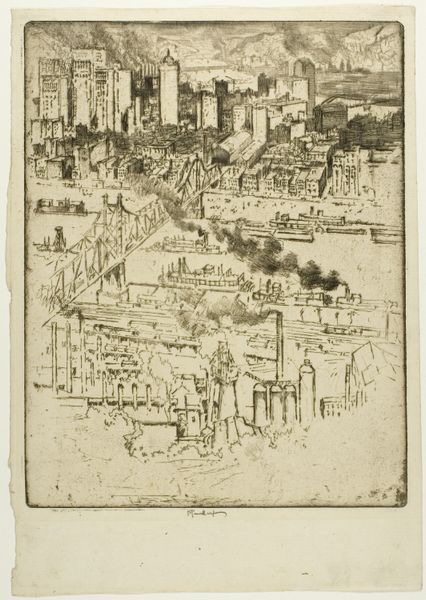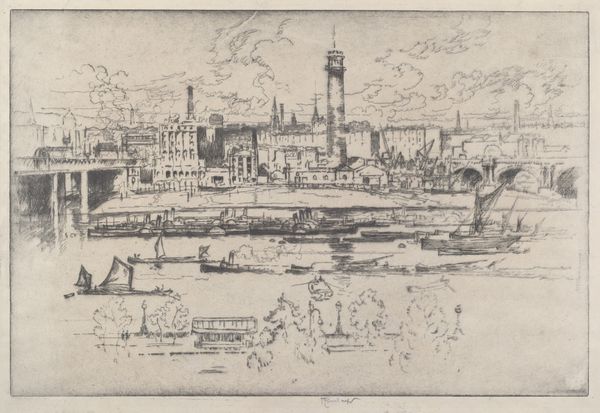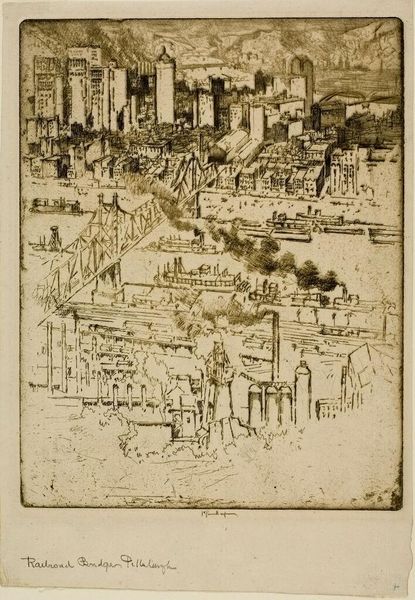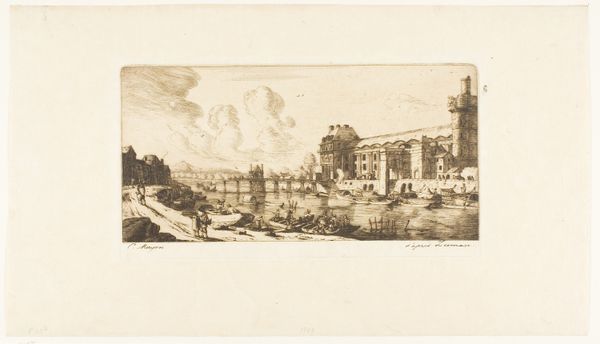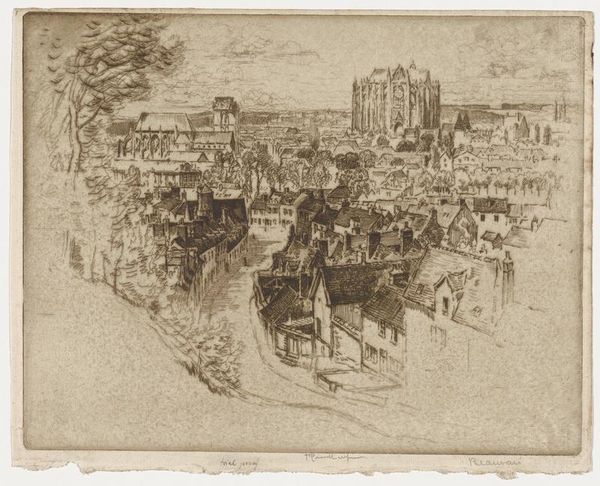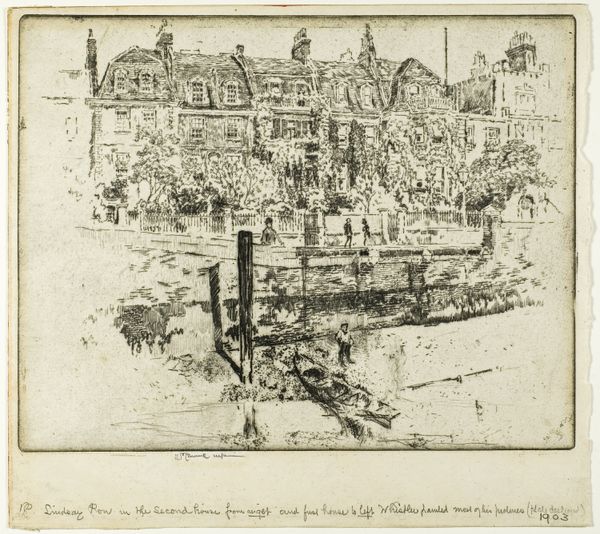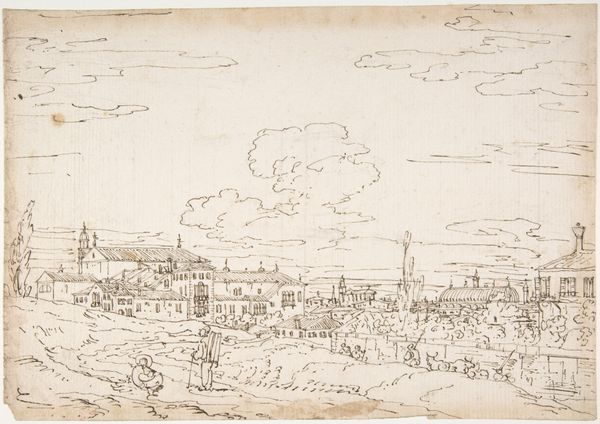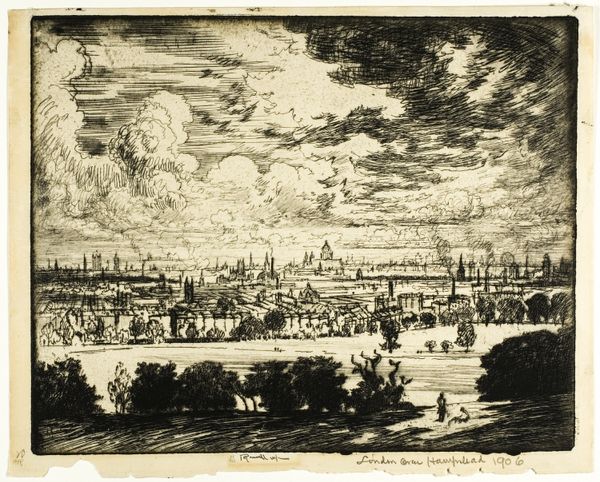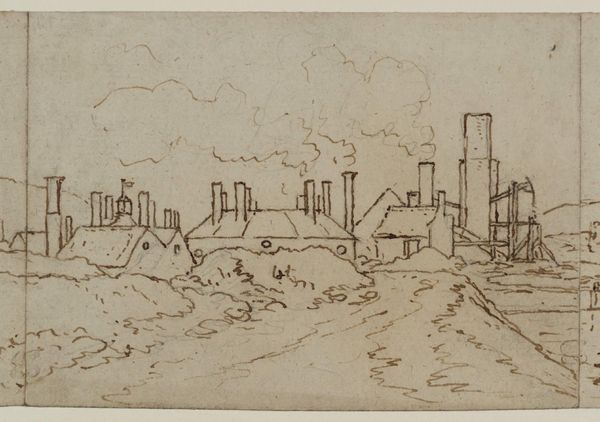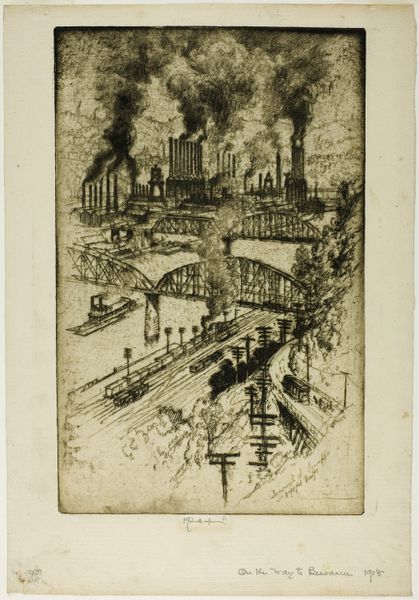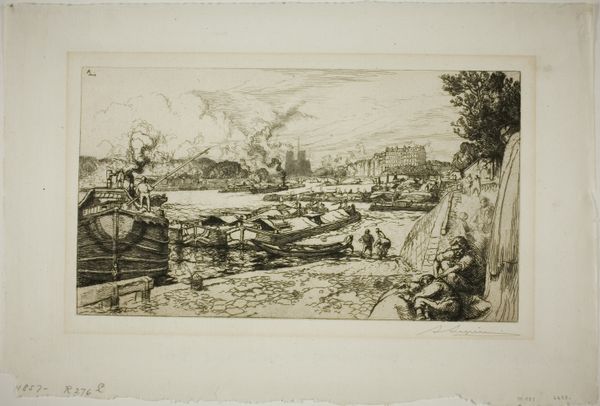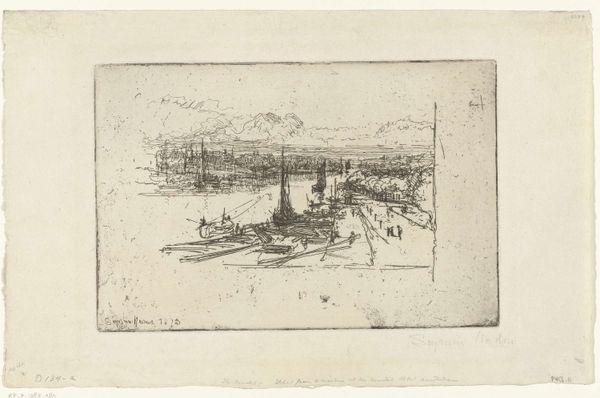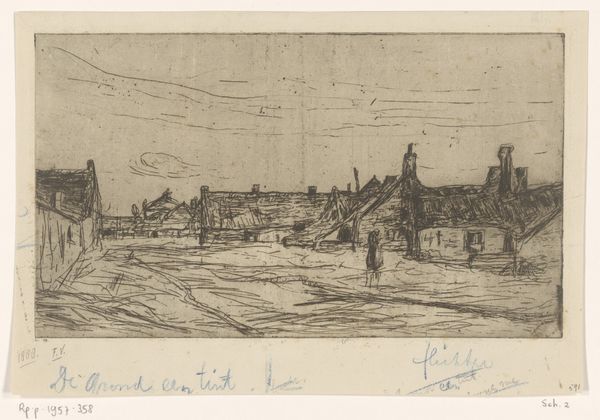
Dimensions: 185 × 257 mm (image); 202 × 288 mm (sheet)
Copyright: Public Domain
Curator: Welcome. We are standing before Joseph Pennell’s “Greenwich Park, No. 1,” an etching made in 1906. Editor: It's all delicate lines and hazy light; there's an almost dreamlike quality, even though it depicts what looks like a bustling industrial city in the distance. Curator: Precisely. Note how Pennell orchestrates depth. The foreground, dominated by the park itself, gently slopes downwards. It directs our eye toward the dense tapestry of the city beyond. Observe his strategic use of line and tone— it is a masterful composition that creates both separation and unification within the pictorial space. Editor: Thinking about the printmaking process itself, the physical act of etching the lines into the metal plate must have been incredibly painstaking. What sort of labor was available at the time to do that? Did he employ assistance, or do it all by hand? We can really observe that in the textural variation across the print's surface, especially where the ink clings in heavier deposits. Curator: That's an interesting point about the manual labor involved in etching. However, to return to my earlier comment, I encourage a deeper look into the ways Pennell manipulates the interplay between urban and natural elements within a rigorously organized composition. Editor: True, the city is 'contained', viewed almost passively in the distance. This challenges the traditional understanding of landscape, doesn’t it? It is the frame for daily work. The print is as much about that working landscape as it is about visual elegance. Curator: Ultimately, "Greenwich Park, No. 1" achieves a visual harmony; it marries the immediacy of Impressionism with a structured, architectonic framework. Editor: Seeing it now, considering the labor involved in making such a work, is revealing about a society poised for transition into complete industrialization. Food for thought.
Comments
No comments
Be the first to comment and join the conversation on the ultimate creative platform.
